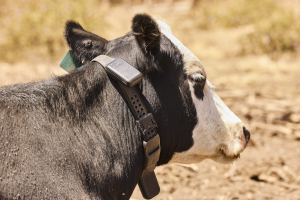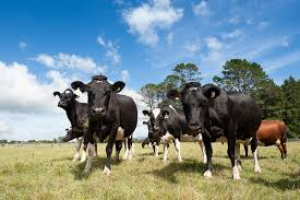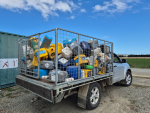Dairy NZ is working with milking technology makers to fill that gap, developing standard protocols to assess detection systems against.
“We had 10 companies around the table in March and all were very positive,” says Brian Dela Rue, a research engineer with Dairy NZ’s milk harvesting and automation team.
He and colleagues Jenny Jago and Claudia Kamphuis presented a paper at the South Island Dairy Event in June revealing the findings of a survey of 80 farms with ‘hi-tech’ dairies, 42 of which included automated mastitis detection of one sort or another.
The level of satisfaction with the detection technology was found to be markedly lower, at 62% satisfied or very satisfied, than for tools such as automated cup removal (91%), drafting (84%), or teat spraying (84%).
Dela Rue and his colleagues say possible reasons for that include the complexity of automating mastitis detection, over-expectation by farmers of some relatively basic detection technology, and a lack of understanding how to use the systems effectively.
Where it’s the latter, Dela Rue says culpability can lie with both the farmer, and/or the supplier. “Some farmers haven’t had the training they need or in some cases, they’ve not committed to the technology.”
He’s aware of at least one manufacturer who is effectively screening who they’ll supply certain systems to as some computer skill is needed to make it work well.
The systems available fall into two basic categories: those that test the electrical conductivity (EC) of milk which is known to correlate with the level of tissue damage in the udder; and those that measure somatic cell count.
The latter is the more expensive, in the order of $3000/bail, and consequently is often only fitted to every third or fourth bail on a rotary.
“But even then it’s a bit like herd testing every cow every fourth milking, which is a pretty good way to manage the somatic cell count of the herd,” he notes.
With the EC meters, there are systems available that give results for each quarter of the udder, while others work at a cow-level. Prices start from about $1000/bail.
Of the 42 farms with automated mastitis detection in the survey, 90% were using EC, he notes. “Most people that have these systems are using the conductivity type.”
False alerts are a common problem. International studies of EC found some recording the equivalent of 310 per 1000 milkings, but the best systems, operated well, triggered just 20 false alarms per 1000.
On one of DairyNZ’s research farms, an EC mastitis detection system identified 27 of 46 cows with mastitis, a sensitivity of 63%, while false alerts ran at 8.7%.
Dairy NZ says systems should be measurable in their ability to do three things: identify cows with clinical mastitis, identify cows with high cell counts, and identify cows with subclinical mastitis.
Dela Rue says a balance between system sensitivity – its ability to detect mastitis – and the number of false alarms, has to be struck. He suggests a detection rate of not less than 80%, with less than 1% false alerts, should be the target.
Farmer survey results show in herds of 300 to 800, up to 20 false alarms per milking would be considered tolerable.
Benefits reported by those with systems include: time saved by not having to strip the herd regularly, earlier identification of cases and hence better chance of cure, and data to inform culling decisions; ability to monitor cows’ recovery phase.
Dela Rue notes the benefits haven’t been quantified, physically or financially, unlike the cost of mastitis to farms, which is well documented and built into the SmartSAMM calculator. In the SIDE paper, Dela Rue et al show how cutting cell count from 250,000 to 150,000, clinical mastitis from 16% to 10%, and culls and deaths from 2% to 1%, would save the average South Island herd of 582 cows $34,200/season.
But as he pointed out to Dairy News, installing a detection system isn’t necessarily going to deliver that benefit; it all depends on how the farm uses it. “These systems are not going to solve mastitis problems. They are only going to help you identify the cases.”

















